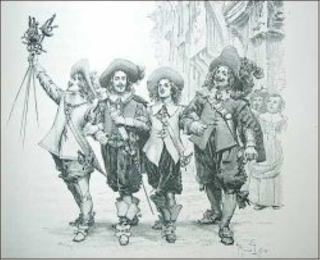 Nearly 500 years before Christopher Columbus set foot on the new world, an adventurous and pioneering Norseman landed on the shores of North America and established the first European settlement in the New World.
Nearly 500 years before Christopher Columbus set foot on the new world, an adventurous and pioneering Norseman landed on the shores of North America and established the first European settlement in the New World.Leif Ericsson, the pioneering adventurer and explorer of the Vikings was born in the year 970 AD in Iceland. His father was Eric the Red, the famous Norse explorer credited with the discovery of Greenland. Little is known about Leif Ericsson’s early life except that he was born in Iceland. Adventuresome by nature, Leif was an avid voyager who traveled to nearby lands. During one such visit to Norway, Ericsson met King Olav Tryggvasson and learned about the Christian faith. Soon, he was baptized along with his followers and returned to Greenland. Passionate about his new faith, he explained his newfound beliefs to his mother who soon followed her son and was baptized.
It was during his stay in Greenland that Leif was drawn to something he had heard from another Viking Explorer, Bjarni Herjólfsson. Bjarni had told him of how on one of his voyages to Greenland he had been driven off course and had spotted lands further to the west. The young Leif Ericsson was greatly fascinated by this adventurous tale. He wanted to set sail in search of those unknown lands
He quickly got together a crew of about 35, obtained Bjarni’s ship and asked for his father to come along with him and take charge of the voyage. Erik, though, refused saying that he was too old. Leif, however, managed to persuade his father to join the voyage. A reluctant Erik agreed. However, on the way to the dock a freak accident occurred which made Erik change his mind. Erik had fallen from his horse on the way to the dock. Interpreting the accident as an inauspicious omen, Erik refused to join the expedition. An unhappy Leif was forced to lead the exploration on his own. The year was 1000 AD
Navigating using the sun during the day and sightings of the stars at night, as was the Viking method, Eriksson sailed for many days. He finally spotted land towards the west. Leif landed on the shore and found the land to be barren. He named it Helluland after the many flat stones he found there. The island is known as Baffin Island today.
Setting sail again, he sailed further and soon came across land. This land, though, was forested due to which Leif called it Markland meaning “land covered with wood”. Today, we know this land as Labrador.
Leif, however, did not stay there for long. He sailed further south and couple of days later sighted land again. The land he saw appeared to be covered with grass and with a shallow bay. He found the land to be idyllic, with streams containing salmon and thick grassy meadows. He found the land suited for settlement with winter fast approaching. Soon, the expedition set up camp and began exploring the island. The found the land containing grape vines bountifully laden with grapes and named it Vinland, modern New Found land.
Grapes proved to be a very lucrative find as there were not grapes in Greenland. Leif returned to his homeland with his ship loaded with grapes. In the years to follows, other Vikings followed Leif and established settlements. However, these settlements were abandoned shortly after violent encounters with the native Thule whom the Vikings called skraelings.
The incredible and heroic story of Leif Eriksson is mentioned in the Greenlanders Saga - a historical narrative of events in Norse society. In 2000, the 1000th anniversary of the landing of Leif Eriksson on the North American Continent was celebrated.

 When Santa has finished with dispensing his goodies to the world’s children, where does he go back to? Where does he live? Well, according to the people of Finland, Santa lives in the northern part of their country, known as Lapland. He lives in a place called Korvatunturi.
When Santa has finished with dispensing his goodies to the world’s children, where does he go back to? Where does he live? Well, according to the people of Finland, Santa lives in the northern part of their country, known as Lapland. He lives in a place called Korvatunturi.  The Dugong is an aquatic mammal that lives in the sea, usually in shallow areas such as channels, bays, etc.
The Dugong is an aquatic mammal that lives in the sea, usually in shallow areas such as channels, bays, etc. 

 "The Three Musketeers" is a novel by the noted French Playwright and novelist, Alexander Dumas. Set in the backdrop of the French political scene before the French revolution, the novel details the adventures of a young man,
"The Three Musketeers" is a novel by the noted French Playwright and novelist, Alexander Dumas. Set in the backdrop of the French political scene before the French revolution, the novel details the adventures of a young man, 
|